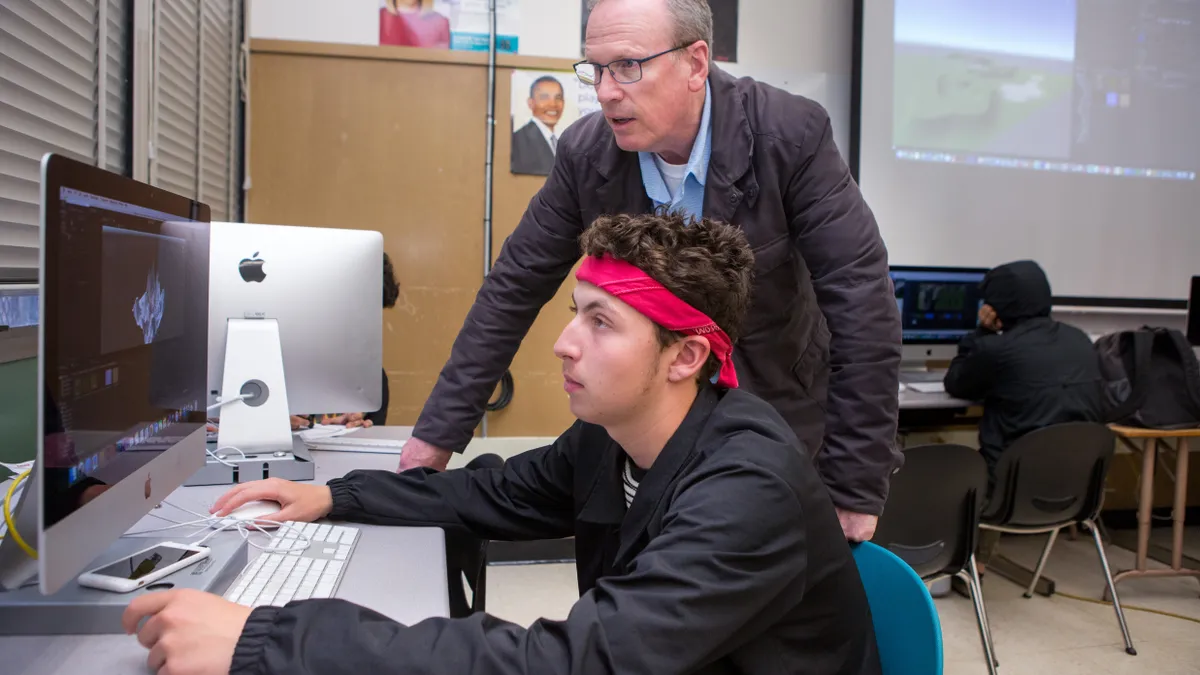Dive Brief:
- Social studies teachers are not "above the fray" in how they present and discuss news sources' credibility in the classroom, according to a study published in the journal Educational Researcher. The researchers found a connection between high school social studies teachers’ political views and how credible they found mainstream media sources.
- Teachers who consider themselves “very conservative” feel Fox News is the most credible of 12 sources. On the other end of the political spectrum, self-described liberal teachers rated Fox as the least credible. Both groups listed BBC and NPR/PBS among their top three most-trusted sources.
- Teachers who define credible news sources as those that fact-check, do in-depth research and use other journalistic practices had a weaker link between their own views and which media outlets they trusted.
Dive Insight:
The survey drew from 1,065 high school social studies teachers in Indiana, Kansas, Minnesota, Missouri, New York and Texas. Fox News, The New York Times and CNN were the three news outlets teachers on opposite sides of the political spectrum disagreed over the most.
“We find that social studies teachers are just as likely to be influenced by the current controversies and debates about news media credibility as the general public,” said study coauthor Christopher H. Clark, an assistant professor at Northeastern State University in Oklahoma. He noted the findings supported making news media literacy a mandate in schools and in teacher certification.
Officials are instilling more media literacy skills to help students and adults decipher fact from fiction. To do that for students, teachers must define what media literacy means and what principals it includes. Amy Callahan, a former journalist, says media literacy includes internet navigation skills. Local journalists can be tapped to explain journalistic practices, and librarians can be trained to teach media literacy to both adult and student patrons.
While social media platforms give a voice to everyone and boost citizen journalism, they can also muddy the waters for those seeking only facts. Often, consumers of the news can’t tell the difference between what is opinion and what is factual. Teaching students how to assess the difference is becoming a necessary life skill.
Florida and Ohio are considered ‘advanced leaders’ in K-12 media literacy by requiring it to be incorporated into K-12 curriculum. Texas passed legislation last year including media literacy as part of digital citizenship curriculum. Calls for improved media literacy skills in schools spiked overall in 2016, when the term “fake news” popularized.
Consistent media assessment guidelines will help educators teach students how to discern fact from fiction or bias.
The problem isn’t just with traditional news, though. Fringe groups often develop research material that isn’t fact-based. The Climate Literacy and Energy Awareness Network (CLEAN) found, for example, more than 30,000 free sets of material on the internet, and only 700 were usable for schools. Sometimes, even teachers share their personal beliefs on topics like climate change instead of teaching students the science behind the claims and how to go through the critical thinking process to reach their own conclusions.














